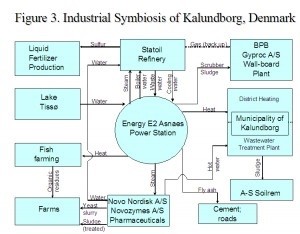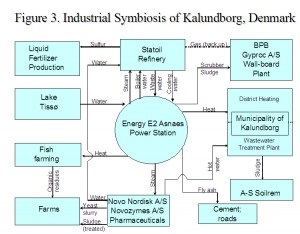
The term “Industrial Ecology” sounds like an oxymoron, but “we relish that,” says Marian R. Chertow, Assistant Professor of Industrial Environmental Management and the Director of the Industrial Environmental Management Program.
Since 1998, her department has sought to discover and characterize industries that form ecosystems of their own, known as “kernels.” Chertow consolidated these characterizations and put forth recommendations for future sustainable industrial symbioses recently in the Journal of Industrial Ecology.
The first major industrial ecosystem discovered was that of Kalundborg, Denmark. Once a power plant was established, each industry of Kalundborg began to replace scarce groundwater with byproducts from other industries.
The discovery of the Kalundborg system in the early 1990’s spurred researchers to begin planning economically efficient industrial systems. In the United States, however, the planned symbiosis projects either failed or reverted to the appearances of more traditional industrial parks.
Although these planned kernels were unsuccessful, others have secured both economic and ecological benefits. The exchange of byproducts is cheaper and less detrimental to the environment than the use of raw resources. For instance, waste water from an oil refinery can be efficiently used as cooling water for a power plant.
Many studies on industrial symbioses are performed in areas with restricted resources, such as islands. Hawaii and Puerto Rico are especially rich areas for industrial ecosystems. Chertow’s team gained access to 150 companies in the latter, many of which had formed kernels.
Industrial ecosystems are continuously in flux; like nature, they change and adapt depending on the surroundings and available resources. New corporations arrive, find their ecological niches, and frequently depart. Through their research, Chertow and her colleagues hope to document these kernels and model their circumstances for the benefit of industries and societies well into the future.

